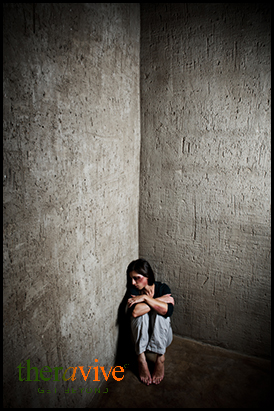 On July 3, 2011, 18-year-old Lauren Astley was found brutally murdered. Her boyfriend, Nate Fujita, was charged with her death (Donaghue, 2013). What went wrong? How could this happen? No one believes that something like this will ever happen to their child or their family. However, the reality is that almost 1.5 million high school students in the U.S. experience physical abuse from a dating partner in a single year (Dating Abuse Statistics, 2014).
On July 3, 2011, 18-year-old Lauren Astley was found brutally murdered. Her boyfriend, Nate Fujita, was charged with her death (Donaghue, 2013). What went wrong? How could this happen? No one believes that something like this will ever happen to their child or their family. However, the reality is that almost 1.5 million high school students in the U.S. experience physical abuse from a dating partner in a single year (Dating Abuse Statistics, 2014).
According to the CDC (2014), 22% of adult women and 15% of adult men who are victims of domestic violence experienced some form of partner violence between the ages of 11 and 17. In this same CDC survey, one in ten high school students reported that they were physically hurt on purpose by a boyfriend or girlfriend during the 12 month period before the survey. Additionally, boys who witness domestic violence are two times as likely to abuse their partners and children (“11Facts”, 2014). This demonstrates that unhealthy relationships can start very early, and can last well into adulthood.
Dating is supposed to be a time for teens to explore relationships and learn about themselves. It is supposed to be fun--and safe. But sometimes things go terribly wrong. Too often, teens are resorting to emotional and physical violence to resolve conflicts and manage painful feelings. Substance abuse can also be a contributing factor when teen dating relationships become abusive. Teens and their loved ones must be able to recognize abusive behavior in relationships, and know how to safely leave a relationship and get help.
Types of Abuse in Dating Relationships
Emotional, physical and sexual abuse that occurs in teen dating relationships can look very much like what goes on in an abusive adult relationship. Regardless of age, intimate partner abuse is ultimately about one person trying to exert power and control over another. This can take a number of forms, including:
-
Emotional/Psychological Abuse: Things like name calling and put downs can decrease self-esteem and feelings of self-worth. Threats of physical or emotional harm can make it difficult for teens to share what is happening in their relationship. Often, the victim is isolated from friends and family, decreasing the chance that loved ones will see what is going on.
-
Physical Abuse: This may be what people think of first when they think about domestic violence. Physical abuse includes things like pushing, choking, pinching, shoving, hitting, slapping, and kicking.
-
Sexual Abuse: This includes unwanted touching, forced sexual encounters, rape, and threats to spread rumors if the victim will not engage in sexual behaviors (CDC, 2014).
-
Stalking: This is repeated contact by a dating partner (in person, phone, text, online, through others) that feels threatening, and is unwanted (Understanding Teen Dating Violence, 2014)
-
Break-up Violence: The tragic death of Lauren Astley is a case of what has come to be termed as “break-up violence” (Donaghue, 2013). Those who have worked with victims and perpetrators of domestic violence have long understood that when a victim, including a teen victim, tries to leave an abusive relationship, the risk for violence increases. The perpetrator is losing control, so may increase abusive behaviors in an attempt to regain control over the victim. This can actually be the most dangerous time in the relationship.
Technology and Teen Dating Abuse
According to a 2007 Survey of Technology and Teen Dating (2012), technology has become a new weapon in teen dating relationships. Alarming numbers of teens report being controlled and abused by tech devices at all times of the day and night. Abuse can be “unimaginably frequent” and more public. Texting can become an almost continuous form of harassment and control, and parents often don’t realize the severity of the problem. This same survey reports that:
-
Nearly one in five teens report that their partner has used a social networking site to harass or put them down.
-
More than one in ten report that a partner has shared private or embarrassing pictures/videos of them.
-
17% say their partner has made them afraid not to respond to a cellphone call, email, IM or text message because of what he/she might do.
-
One in ten claims they have been threatened physically via email, IM, text, chat, etc.
-
16% claim their partner has actually bought a cellphone for them to use
Parents and teachers may have no idea what is going on in a teen’s relationships. Many teens believe that what they are experiencing in their relationship is not serious enough to tell their parents. They also worry that if they tell their parents, they will limit their cell phone or computer usage, or tell them they cannot see their boyfriend/girlfriend (Technology and Teen Dating Abuse Survey, 2007, 2012).
Substance Abuse and Dating Abuse
Use of substances by either person in a dating relationship can increase the chances that abuse will occur. Drug or alcohol use can increase the stress and conflict in a relationship, while also impairing judgment and decision making. In some cases, substance abuse is used as a way for one or both parties to cope with relationship problems, creating a vicious cycle (Substance Abuse and Intimate Relationships, 2014).
Teens that are involved in abusive dating relationships are also more likely to develop substance abuse problems or mental health problems. In one study, boys and girls who reported they had been in an abusive dating relationship were interviewed five years later. The girls were more likely to report binge drinking, depression, smoking, and thoughts of suicide, compared to girls who were in healthier relationships. Boys who had been in abusive relationships as teens were more likely to be antisocial, think about suicide, and use marijuana as young adults than boys who did not report any dating abuse (Mann, 2012). It’s important for parents and other adults to be aware of teens’ substance abuse, and what is going on in their relationships, but this can be tough to do. Teens won’t always readily open up about their lives, so what can parents and loved ones look for?
 Warning Signs of Abuse in Teen Dating Relationships
Warning Signs of Abuse in Teen Dating Relationships
Abuse in dating relationships occurs on a continuum, and it can be difficult for teens and parents to know when behaviors have crossed the line and become abusive. Teens who witness domestic violence at home may have even more trouble recognizing and escaping abuse when it happens in their own relationship. What is experienced on a regular basis can become “normal”, even when it’s unhealthy. According to Women’s Health.Gov (2014), behaviors that are abusive in dating relationships include:
-
Checking a cell phone or email without permission to monitor the victim
-
Posting sexual images online without permission
-
Emotional abuse including threats and intimidation
-
Rushing the pace of the relationship
-
Using social status (making all the decisions, trying to define men’s and women’s roles, spreading rumors to peers)
-
Extreme jealousy, insecurity, bossiness, or possessiveness
-
Explosive temper
-
Isolation from family or friends
-
Threats of suicide if the relationship should end
-
Making false accusations
-
Mood swings and unpredictability
-
Physical aggression/harm
-
Pressure to have sex
-
Blaming the victim for the abuse
The presence of these behaviors and dynamics in a teen dating relationship must be a red-flag for both teens and parents. Too often, abusive behaviors are minimized and not taken seriously, with tragic consequences (Women’s Health.Gov, 2014).
Leaving an Abusive Relationship
Young people often lack the emotional maturity to cope with the complex and painful feelings that arise in an intimate relationship. When the time comes for a relationship to end, teens are often unprepared for the reaction of their partner. Some can accept the break-up, grieve the loss, and move on. But others have difficulty letting go, and become desperate to hang on to their partner. It’s important for teens to understand that they have a right to end a relationship and how to safely leave an abusive relationship. The CDC (2014) recommends these actions to stay as safe as possible:
-
Create a safety plan. This includes a plan for where to go when in danger.
-
Have a working cell phone to call for help, if needed
-
Avoid walking/riding a bike alone
-
Create a secret code to use with trusted friends and family, so help can be requested without alerting the abusive partner
-
Notify a parent, school counselor, teacher or principal about what’s going on
-
Change a class schedule or work schedule
-
Changes schools, if necessary
-
Get a court restraining order/ protection order
-
Tell a trusted supervisor, co-worker, or human resources at work about what is going on
-
Keep passwords and security settings online private
It’s essential to take any kind of abusive behavior in a dating relationship seriously. Following the murder of his daughter Lauren, Malcolm Astley wished he would have done some things differently. He encourages parents to talk with their children about how to stay safe after a breakup, and how to manage painful feelings without becoming aggressive or abusive. (Donaghue, 2013). Both teens and parents need to understand dating abuse, and how to end an abusive relationship, and how to get help when they need it.
_________________________________________________________________________________________________________________________
11 Facts about domestic and dating violence. (2014). Retrieved June 3, 2014, from http://www.dosomething.org/facts/11-facts-about- domestic-and-dating-violence
CDC. (2014). Understanding teen dating violence. Retrieved June 2, 2014, from http://www.cdc.gov/violenceprevention/pdf/teen-dating-violence-2014-a.pdf
Dating abuse statistics. (2014). Retrieved June 2, 2014, from http://www.loveisrespect.org/is-this-abuse/dating-violence-statistics
Donaghue, E. (2013, October 27). 48 Hours: Father of Murder Victim Lauren Astley Promotes "Breakup Violence" Awareness. Retrieved June 2, 2014, from http://www.cbsnews.com/news/48-hours-father-of-murder-victim-lauren-astley-promotes-breakup-violence-awareness
Love is not ABUSE. (2014). Retrieved June 1, 2014, from http://www.loveisnotabuse.com
Mann, D. (2012, May 10). Teen dating violence linked to substance abuse. Retrieved June 11, 2014, from http://teens.webmd.com/news/20121206/teen-dating-violence-substance-abuse
Substance abuse and intimate relationships. (2014). Retrieved June 11, 2014, from http://www.aamft.org/imis15/content/Consumer_Updates/Substance_Abuse_and_Intimate_Relationships.aspx
Technology and teen dating abuse survey, 2007. (2012). Retrieved June 2, 2014, from http://www.breakthecycle.org/technology-teen-dating-abuse-survey-2007
Violence against women. (2014). Retrieved June 2, 2014, from http://www.womenshealth.gov/violence-against-women/types-of-violence/dating-violence.html